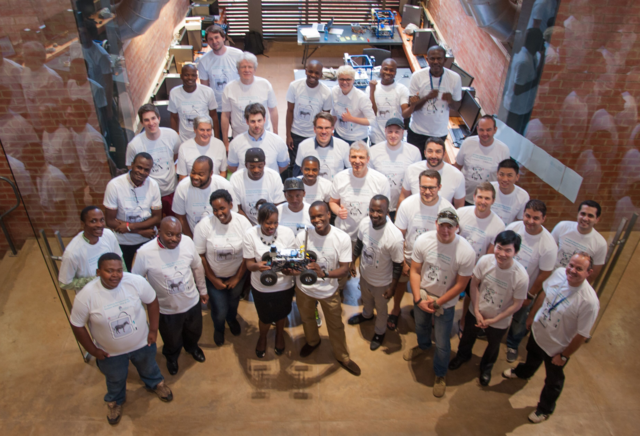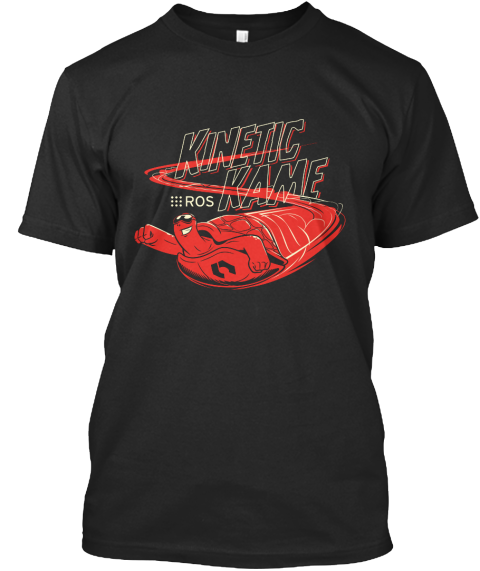The ROS Industrial Consortium was established four years ago as a partnership between Yaskawa Motoman Robotics, Southwest Research Institute (SwRI), Willow Garage, and Fraunhofer IPA. The idea was to provide a ROS-based open-source framework for robotics applications, designed to make it easy (or at least possible) to leverage advanced ROS capabilities (like perception and planning) in industrial environments. Basically, ROS-I adds models, libraries, drivers, and packages to ROS that are specifically designed for manufacturing automation, with a focus on code quality and end user reliability.
Mirko Bordignon from Fraunhofer IPA opened the final ROSCon 2016 keynote by pointing out that ROS is still heavily focused on research and service robotics. This isn't a bad thing, but with a little help, there's an enormous opportunity for ROS to transform industrial robotics as well. Over the past few years. The ROS Industrial Consortium has grown into two international consortia (one in America and one in Europe), comprising over thirty members that provide financial and managerial support to the ROS-I community.
To help companies get more comfortable with the idea of using ROS in their robots, ROS-I holds frequent training sessions and other outreach events. "People out there are realizing that at least they can't ignore ROS, and that they actually might benefit from it," Bordignon says. And companies are benefiting from it, with ROS starting to show up in a variety of different industries in the form of factory floor deployments as well as products.
Bordignon highlights a few of the most interesting projects that the ROS-I community is working on at the moment, including a CAD to ROS workbench, getting ROS to work on PLCs, and integrating the OPC data protocol, which is common to many industrial systems.
Before going into deeper detail on ROS-I's projects, Shaun Edwards from SwRI talks about how the fundamental idea for a ROS-I consortium goes back to one of their first demos. The demo was of a PR2 using 3D perception and intelligent path planning to pick up objects off of a table. "[Companies were] impressed by what they saw at Willow Garage, but they didn't make the connection: that they could leverage that work," Edwards explains. SwRI then partnered with Yaskawa to get the same software running on an industrial arm, "and this alone really sold industry on ROS being something to pay attention to," says Edwards.
Since 2014, ROS-I has been refining a general purpose Calibration Toolbox for industrial robots. The goal is to streamline an otherwise time-consuming (and annoying) calibration process. This toolbox covers robot-to-camera calibration (with both stationary and mobile cameras), as well as camera-to-camera calibration. Over the next few months, ROS-I will be releasing templates for common calibration use cases to make it as easy as possible.
Path planning is another ongoing ROS-I project, as is ROS support for CANOpen devices (to enable IoT-type networking), and integrated motion planning for mobile manipulators. ROS-I actually paid the developers of the ROS mobile manipulation stack to help with this. "Leveraging the community this way, and even paying the community, is a really good thing, and I'd like to see more of it," Edwards says.
To close things out, Edwards briefly touches on the future of ROS-I, including the seamless fusion of 3D scanning, intelligent planning, and dynamic manipulation, which is already being sponsored by Boeing and Caterpillar. If you'd like to get involved in ROS-I, they'd love for you to join them, and even if you're not directly interested in industrial robotics, there are still plenty of opportunities to be part of a more inclusive and collaborative ROS ecosystem.
Next up: Kai von Szadkowski (University of Bremen) Check out last week's post: MoveIt! Strengths, Weaknesses, and Developer Insight










-thumb-640x162-1416.png)